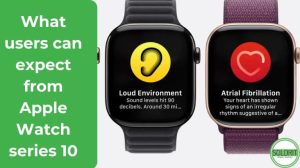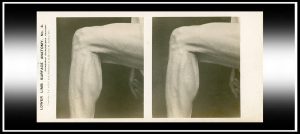By Paul Maclean
Three years ago (almost to the day) I was privileged to have made a small contribution to The Stereoscopy Blog’s article on Stereoscopic (3D) Cameras & Their Stereoviews. The piece detailed my Stereoly Beam Splitter for Leica III cameras from the 1930s. Since then Rebecca kindly invited me to expand a little more on what I actually do with this piece of inter-war stereoscopic equipment.
As described in the original article, because the Leica III (a 1933 model) uses 35mm film (the LEItz CAmera was the first commercially successful camera to do so), the results are not instant and so shots are often chosen with some thought and a certain patience is needed to enjoy the results… While the beam splitter is certainly capable of capturing action shots (up to 1/500th second) I find that I’m more drawn to architectural and environmental scenes that are able to demonstrate the wonderful sense of depth and immersion you can achieve with stereoscopy.
My workflow (like many I suspect) is typically hybrid, analogue capture on film (colour or black & white), followed by digital scanning and screen display. In more recent times I’ve become interested in exploring beyond the screen (whether on a monitor or a headset) which has led me to creating and displaying images in two historic formats:
1) View-Master
Yes, it’s still possible to have custom View-Master reels made! There are a variety of services available online (UK/US/Europe) and the results are at least as good as any vintage View-Master reel. A recent project involved using the Leica Stereoly to record the ruins of Milner Field near Saltaire in Yorkshire, a haunted place left to return to nature after the fall of a grand Victorian textile empire. Viewing newly made View-Master reels is like peering inside another world of your own making. All the more visceral by its depth.
2) Cyanotype Stereographs
This second format was inspired by Rebecca’s own cyanotype stereo views and the Stereoscopy Blog’s Light and Depth Emporium. Cyanotype (the Ferro-Prussiate process) is an iron-based Victorian printing method invented by Sir John Herschel in 1842 which produces deep Prussian Blue images in a relatively straightforward and direct fashion. It is the origin of the term “blueprint”. There is something magical about seeing your stereo view come into existence before your eyes as you wash away the salts under your tap. The way each cyanotype is made (by hand) means no two are exactly alike. It is a wonderful combination of art and science, which I love.
Each of these two material forms has their own appeal and in some cases I’ve re-created the same stereo image in both, to appreciate their differences. I find the tactile and tangible nature of stereographic prints to be very much worth the effort, adding more weight (so to speak) to the meaning and appreciation of what was captured by taking the extra step to transcend from the virtual to the real.
I would encourage you to give printing your stereo images a go (in whatever form). I find that prints tend to attract more attention and focus from the viewer; considering the effort you make to create them in the first place, that can be no bad thing!
Paul Maclean
#StereoscopyDay
Copyright © The Stereoscopy Blog. All rights reserved.
News
Berita Olahraga
News
Berita Terkini
Berita Terbaru
Berita Teknologi
Seputar Teknologi
Drama Korea
Resep Masakan
Pendidikan
Berita Terbaru
Berita Terbaru
Berita Terbaru


